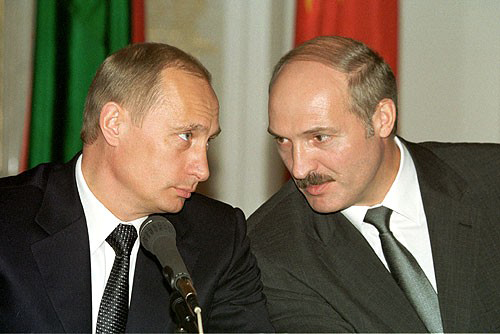Withering of the Church in Poland

Following the very poor data on the effects of recruitment to seminaries, which was published in autumn, we received a report on the personal status in the consecrated life. Can we say that the years 2021 and 2022 will be a thump inside Polish Catholicism in the same manner that the year 1965 was in France? If so, the Church’s response should not be activist desperation, but deliberate decisions as to what countermeasures should be taken.
Tomasz Rowiński
Let’s start with the seminarians. In the current academic year, 356 candidates began their formation for priesthood, while last year there were 441, which in practice means as much as a 20% decrease. If we look at the issues in a longer perspective, let us recall that in 2012, 828 men enrolled in higher seminaries in dioceses and orders. And in the previous decade, these numbers were even more impressive. The phenomenon of “empty years has” also appeared in recent years. In the 2020/2021 academic year, there was one seminary – Świdnica – to which no candidate applied, but this year there are already four such seminaries. These are Bydgoszcz, Drohiczyn, Elbląg, and Łowicz.
Although the specificity of monastic vocations is slightly different, it should be noted that there were 19 seminaries of clerical congregations which had no applicants. There were 114 candidates for the priesthood in the Catholic Church in Poland who began their formation in religious congregation seminaries, while there were 242 in dioceses. It is worth adding that five candidates applied to the seminary in Łódź for fully fledged candidates 35+.
FEWER RELIGIOUS VOCATIONS
In recent days, the Catholic Information Agency has published a new report, this time on consecrated life in Poland. Let’s look at the most important data contained in it. There are just over 30,000 consecrated persons in Poland, of whom 16,307 are sisters in active congregations. There are only 1,025 monastic nuns, which is still a significant number in relation to monks who were not included in the report at all. The near absence of strict male monastic congregations in Poland, an important element of Catholic culture even in secularized countries like France, must be considered a problem. The experiences of other countries show that the Benedictine abbeys, which maintain a stable spirituality, are real centers of Catholic life, an important landmark in the sea of the world reluctant to Christianity.
There are about 11,000 members of male orders in Poland. 1024 people belong to the secular institutes, and 748 people are on the path of individual consecration. It should be mentioned that the report is very detailed and gives many parameters, so readers who want to go deeper into the topic are can refer to the Catholic Information Agency site. The report also mentions an overall downtrend. Fewer and fewer people live in religious congregations, be they apostolic or monastic. Interestingly, the state of secular institutes remains stable, and the number of individual consecrations is increasing. The aforementioned downtrend is not spectacular but shows a consistent lack of substitutability for successive generations of monks.
Let us quote a report published last year that talked a lot about the problems that plague religious congregations. Although the quoted passage concerns female congregations, it is also applicable to men. “The problem is the new vocations. Mother Jolanta Olech, the secretary general of the Conference of Major Superiors of Religious Congregations for Women, emphasizes that after the vocational boom of the late 1970s, there has been a decline in general, and for about 15 years this decline has already been marked by a crisis. For example: in 2000, 566 postulants applied to religious orders, in 2009 – 251, in 2017 – 177. Other statistics also show unfavorable dynamics. In 2000, the ratio of sisters who passed away and who were beginning the novitiate was 428:541. Since 2007, however, the number of those dying far exceeds the number of novices. In 2016, 319 sisters died, and only 121 were enrolled in the novitiate. On top of that, there are also departures from the congregations. Looking at the statistics from recent years, it should be assumed that each year, at different stages of formation, about 130 to 240 nuns leave”.
A HARMFUL MINISTRY OF COOLNESS
What can we say about the reasons for this situation? The Church in France, mentioned twice before, experienced its critical year in completely different historical and social circumstances. In addition, according to the sociologist Guillaume Cuchet, author of the book “How our world has ceased to be Christian” (Comment notre monde a cesse d’etre chretien, Seuil 2020), one of the reasons for this collapse was the exaggerated activism of many French priests. After a not very significant, unfavorable fluctuation of statistics in the 1940s, especially in the young generation of priests, a maximalist conviction appeared that it was necessary to carry out a complete reform of the Church in the spirit of great missionary nature. Later, important methodological reservations were raised to these post-war studies, but this did not reverse the mental trend caused by the obtained impression. The conviction about the need to change everything reached – as Cuchet writes – its peak during the Second Vatican Council and resulted in a crisis that actually broke the Church in France.
Can we find any analogies in Poland to a country with a completely different state history, but with a a Catholic history as strong as ours? Certain elements of the activism which creates an atmosphere of ineptness around the Church are, of course, identifiable. An example of this was the unintentional parody of the holy mass by the Archbishop Grzegorz Ryś in Łódź during the evangelization concert in autumn 2021. Even Bishop Piotr Greger, chairman of the Committee for Divine Worship and the Discipline of the Sacraments of the Polish Episcopal Conference, intervened in this matter. Someone might say that this is irrelevant. However, even quite subjective observations regarding the attitudes of Catholics in public life contradict this. Those who are formed, e.g. during high school or university education, in the spirit of “the ministry of coolness” in adulthood find it more difficult to discover themselves in their Catholic identity. Their religious experience is more associated with the community atmosphere in these ministries than to the teaching of the Church and the need to exercise one’s will and reason to maintain individual integrity. To speak plainly, you do not meet traditionalists who support “lightning marches”1, whereas graduates of fashionable academic ministries in famous religious orders do.
As an element influencing the decline in vocations as well as liturgical participation, one also ought to observe the global confusion about what the Church really teaches. Pope Francis has his merits here. Despite the enthusiasm that accompanied the first years of his pontificate, no “Francis effect” of vocation had emerged. The Church, of course, also suffers the consequences of its reluctance to solve its own scandalous problems. In the case of our country, passivity has dominated for years, so activism will not become the Polish problem on a mass scale. However, when we combine the Church’s lack of seriousness in its approach to faith – in terms of both teaching and liturgy – with the often culpable lack of authority of the bishops, it turns out that the faithful also lose all points of reference and, consequently, the will to get involved. One may ask why, despite the evident spiritual weakness of those who wield power in the Church, the circles related to the Tridentine liturgy have developed with the biggest intensity in the last dozen or so years. The answer is simple, because this liturgy shows that the Church’s cause, its faith and teaching go beyond the horizon of human weakness seen in the media every day.
ANTIHUMAN CULTURE
Finally, it is necessary to mention the non-obvious aspect of an indisputable issue. Poland is secularizing because it is part of a global, often anti-religious, and anti-human culture. Liberals often like to say that the Church is inflexible, set against people, does not have an attractive offer for them, etc. and therefore it weakens. There is an element of truth in this – the Church is weakening because, despite its internal problems, it is still a symbol of opposition to the civilization of death, to sin and, finally, a mark of God’s presence in the world. This is also why, humanly speaking, it gains enemies.
So, will the years 2021 and 2022 become a historical date in Church statistics? Maybe. Or maybe after the end of pandemic restrictions, the situation will stabilize or will slightly rebound? I think there is no sense in building high hopes on this. As always, however, a lot, in the case of the fate of specific people seeking a vocation, depends on whether the Church – consecrated and lay people – will care for the existence of environments in which faith remains alive.
1 The Women’s Strike in Poland which became widely recognized for protesting restrictions on abortion popularized the image of a red lightning bolt as a symbol of their resistance.
This article was published in February 2022 in “Do Rzeczy” magazine.



